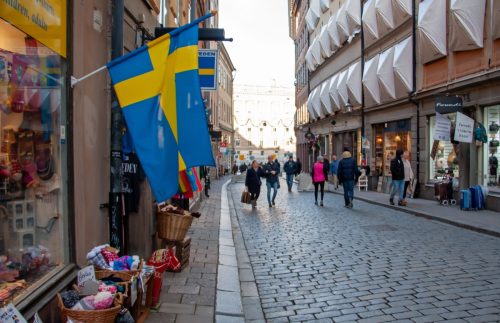What You Need to Know Before You Go to Europe Right Now

International travel has slowly begun to creep to the top of people’s to-do list after two years off due to the ongoing coronavirus pandemic.
If your bucket-list destination this year is somewhere in Europe, you’re in luck, because most European countries are lifting some restrictions and making it easier to pass through airport security and see some iconic sights, like the Eiffel Tower.
But, before you pack up and fly away to France, Germany, or Norway, you’re going to want to read our tips on traveling to Europe right now, according to two experts. Keep reading to learn their timely advice, and next, don’t miss 10 U.S. Islands to Add to Your Bucket List—No Passport Required.
1
There are still some travel limitations, but not as many as over the past two years.

According to Meghan Hayes, an ACC travel advisor affiliated with MEI-Travel, each European country is handling travel restrictions differently right now. “Most are requiring travelers to be fully vaccinated. Spain is requiring boosters for vaccinated visitors. Germany is requiring visitors to fill out a digital registration form. France, which is between both countries, isn’t requiring either of those to travel,” she explains.
The best rule to keep in mind—especially if you plan on traveling between countries—is to check with each individual country before crossing borders, since restrictions and regulations may change from day to day.
RELATED: For more up-to-date information, sign up for our daily newsletter.
2
If you aren’t vaccinated, there are still some countries that you can travel to.

While it is highly suggested that everyone who plans to travel get vaccinated against coronavirus, if you choose not to do so, some European countries will still allow entry. “Most European countries allow entry to unvaccinated travelers provided they can show proof of a negative test result (usually from within 24-72 hours of arrival) or proof of recent Covid recovery,” says Matt Berna, Intrepid Travel’s Managing Director for North America.
Some places to consider for unvaccinated travelers include Denmark, Sweden, and the United Kingdom, which have dropped all pre-entry requirements according to Hayes. Other destinations that allow unvaccinated travelers who are willing to take a PCR test include Malta and Greece. Each country has slightly different rules for when the PCR test should be done, so be sure to check with your travel agent or the website of the country you want to visit for the latest PCR testing guidelines.
3
Most major airlines are increasing flights to Europe.

Finding a flight to Europe is easier than ever, according to Hayes. “Larger airlines like United and Delta have both announced they’re expanding their routes and adding back non-stop flights that were previously offered.”
Non-stop flights to Europe can be found all over the country, but you may save some money if you’re willing to have a layover or two or take a flight that’s at a less desirable time.
READ THIS NEXT: The 10 Best U.S. Cities Every Traveler Should See.
4
There are specific items you’ll need to carry with you on your journey.

Packing for a trip can be daunting, especially if you don’t know what should go in your stowed luggage and what you should be carrying with you through the airport. Both of our experts say that the number one thing to carry is your passport (in a secure spot), and your vaccination records.
Hayes also mentioned that you should carry your negative test results should your destination require one, and Berna said to keep a copy of your travel insurance handy.
5
Some places in Europe are cheaper to visit right now.

France and Germany are always expensive destinations to visit, but you can also travel to Europe on a budget.
“A few countries that are open to travelers and more cost-effective destinations are Croatia, Hungary, Turkey, Bulgaria, and Poland,” says Hayes.
READ THIS NEXT: The Best Travel-Planning Hacks You Need to Know Right Now.
6
While others are more expensive.

Similar to before the pandemic, the more expensive countries are those bucket-list European adventure spots that everyone wants to visit.
“These countries are also experiencing the inflation common across the travel industry, and in general, right now,” says Hayes. “France, Italy, Iceland, Switzerland, Denmark, and the Netherlands remain popular destinations and were already more expensive prior to the pandemic. The cost to travel in these countries has also risen.”
7
There are easy ways to save money traveling to Europe right now.

There are plenty of ways to save money on a European vacation right now. Hayes suggests picking one city as a “home” and then venturing out to smaller countryside towns instead of going from big city to big city. “Enjoy Rome and the surrounding countryside or small villages in Tuscany,” she says. “Ride-sharing and taxis can be a quick way to get around, but public transit will be more cost-effective.”
When it comes time to budget out money for meals, Berna says: “Travelers should always ask where the locals go for coffee, meals, and drinks, as they’re cheaper than the tourist traps.”
For more travel tips, check out The 8 Easiest Countries to Visit Right Now.